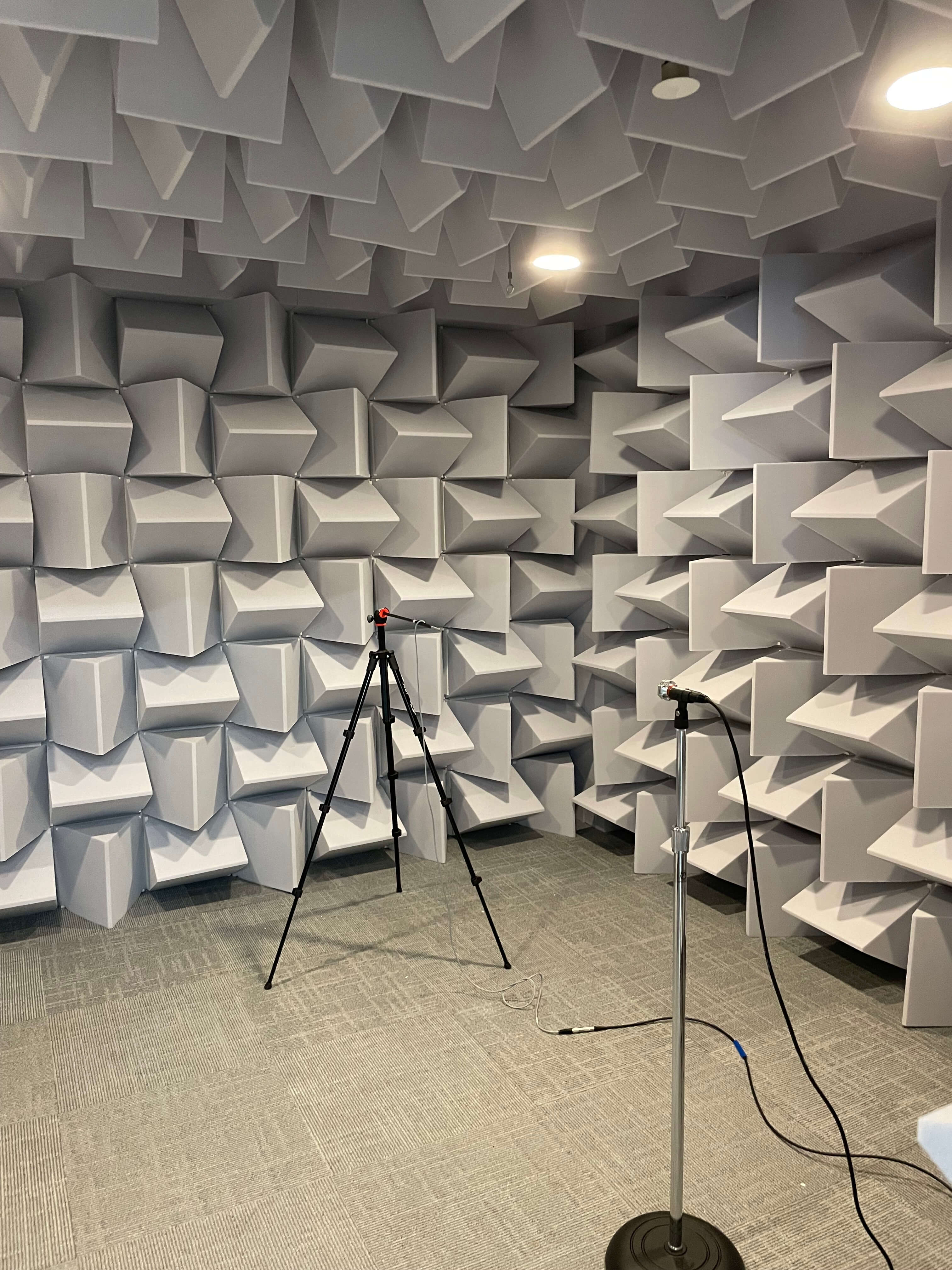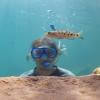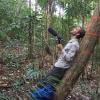Acoustic sensors enable efficient and non-invasive monitoring of a wide range of species, including many that are difficult to monitor in other ways. Although they were initially limited in application scope largely due to cost and hardware constraints, the development of low-cost, open-source models like the Audiomoth in recent years has increased access immensely and opened up new avenues of research. For example, some teams are using them to identify illicit human activities through the detection of associated sounds, like gunshots, vehicles, or chainsaws (e.g. OpenEars).
With this relatively novel dimension of wildlife monitoring rapidly advancing in both marine and terrestrial systems, it is crucial that we identify and share information about the utility and constraints of these sensors to inform efforts. A recent study identified advancements in hardware and machine learning applications, as well as early development of acoustic biodiversity indicators, as factors facilitating progress in the field. In terms of limitations, the authors highlight insufficient reference sound libraries, a lack of open-source audio processing tools, and a need for standardization of survey and analysis protocols. They also stress the importance of collaboration in moving forward, which is precisely what this group will aim to facilitate.
If you're new to acoustic monitoring and want to get up to speed on the basics, check out these beginner's resources and conversations from across the WILDLABS platform:
Three Resources for Beginners:
- Listening to Nature: The Emerging Field of Bioacoustics, Adam Welz
- Ecoacoustics and Biodiversity Monitoring, RSEC Journal
- Monitoring Ecosystems through Sound: The Present and Future of Passive Acoustics, Ella Browning and Rory Gibb
Three Forum Threads for Beginners:
- AudioMoth user guide | Tessa Rhinehart
- Audiomoth and Natterjack Monitoring (UK) | Stuart Newson
- Help with analysing bat recordings from Audiomoth | Carlos Abrahams
Three Tutorials for Beginners:
- "How do I perform automated recordings of bird assemblages?" | Carlos Abrahams, Tech Tutors
- "How do I scale up acoustic surveys with Audiomoths and automated processing?" | Tessa Rhinehart, Tech Tutors
- Acoustic Monitoring | David Watson, Ruby Lee, Andy Hill, and Dimitri Ponirakis, Virtual Meetups
Want to know more about acoustic monitoring and learn from experts in the WILDLABS community? Jump into the discussion in our Acoustic Monitoring group!
Header image: Carly Batist
Fauna & Flora
- 0 Resources
- 0 Discussions
- 3 Groups
Ph.D Speech-Hearing Sciences; 3D Designer/Printer interested in building/testing/deploying standardized environmental recording platforms for scientists and engineers in developing countries.
- 0 Resources
- 0 Discussions
- 10 Groups
- @BrunaTeixeira
- | She
Master and PhD student in the Postgraduate Program in Animal Biology. She works mainly in Landscape Ecology with an emphasis on bioacoustics and interactions between primates.

- 0 Resources
- 0 Discussions
- 2 Groups
- @jcturn3
- | He/Him
Colorado State University
I am a graduate student at Colorado State University working to develop novel acoustic technology for remotely monitoring wildlife.

- 0 Resources
- 11 Discussions
- 3 Groups

- 0 Resources
- 6 Discussions
- 3 Groups
- @rowan
- | they / them
Octophin Digital
Jack of all Trades. I've been a zoo keeper, a conservation geneticist and a web developer who specialises in conservation projects and orgs.
- 0 Resources
- 3 Discussions
- 15 Groups

- 0 Resources
- 2 Discussions
- 3 Groups
- @Rob_Appleby
- | He/him
Wild Spy
Whilst I love everything about WILDLABS and the conservation tech community I am mostly here for the badges!!





- 1 Resources
- 261 Discussions
- 11 Groups
- @tobiaspetri
- | him/his
Schäuffelhut Berger GmbH
data scientist/algorithmic dev - caught fire for movement ecology



- 5 Resources
- 14 Discussions
- 8 Groups
- @Alino
- | Alain
I am a zoologist and I am interested in biodiversity and the conservation of insects and mammals
- 0 Resources
- 0 Discussions
- 3 Groups
- @thomasmutonhori
- | TM
Ecologist
- 0 Resources
- 0 Discussions
- 4 Groups
San Diego Zoo Wildlife Alliance
Lead, San Diego Zoo Conservation Technology Lab
- 0 Resources
- 0 Discussions
- 2 Groups
Prospective PhD students with a background in acoustics and an interest in Arctic ecology are encouraged to email Michelle EH Fournet
16 November 2023
Sarab Sethi is looking for a PhD student (Sept 24) to investigate real time insect pollinator monitoring with acoustics. Sensor design, ML, lab and field experiments, and more !
16 November 2023
Join the Rainforest Connection & Arbimon team to develop software for biodiversity monitoring!
14 November 2023
Yale University & Map of Life Rapid Assessments - XPRIZE
8 November 2023
Baker Consultants has released new ecoacoustic research assessing the benefits of using automated detectors alongside transect bird survey methods.
30 October 2023
Article
Five #tech4wildlife people, projects and updates that caught my attention this month. This issue is a naturetech, biodiversity startup edition! Featuring a living map of the biodiversity startup scene, is nature data...
27 October 2023
Careers
The Institute for Bird Populations (IBP) seeks a California-based acoustic monitoring specialist to collect, manage, and process avian acoustic data from multiple research and conservation projects across California...
26 October 2023
With the rising threats to biodiversity such as wildlife crime, climate change and human-wildlife conflict today, wildlife monitoring technologies have become vital to study movement ecology, behaviour patterns, changes...
25 October 2023
To study song evolution in time and space, we will use individual acoustic monitoring (IAM) - a non-invasive method that allows the identification of individuals based solely on their vocalisations. In this project, we...
20 October 2023
The Marie Skłodowska-Curie PhD Fellowship in Bioacoustic AI for wildlife protection. The PhD position advertised here will be based at the KU Leuven Electrical Engineering Department (ESAT), under the supervision of...
20 October 2023
FLOATERS: Using individually distinct vocalizations to estimate breeding and non-breeding population of a species. Apply for the fully funded PhD position now!
20 October 2023
The Kitzes Lab at the University of Pittsburgh (http://kitzeslab.org) is seeking applications for a Postdoctoral Scholar, Research Assistant, and Graduate Student to work in the areas of bioacoustics, quantitative...
28 September 2023
July 2024
event
August 2024
event
September 2024
event
event
event
October 2024
November 2024
December 2024
event
June 2025
December 2023
event
November 2023
event
43 Products
Recently updated products
| Description | Activity | Replies | Groups | Updated |
|---|---|---|---|---|
| If you search Digikey for a 'strain relief' you should be able to find a rubber grommet that will hold that mic without any additional machining. A blob of silicone will adhesive... |
|
Acoustics | 6 days 3 hours ago | |
| Thanks Carly! I had reviewed some of the help files, but clearly not the right ones!My email is [email protected] |
|
Acoustics, Software and Mobile Apps | 6 days 23 hours ago | |
| Hi Tabitha, What recording settings were you using when you saw these differences? I've measured the consumption across some different firmware versions and I can't see any... |
+10
|
Acoustics | 1 week 4 days ago | |
| Wow.. Really exciting to see this effort. Congratulations on the award!I have been interested in this subject for a long time, as we have elephant-human conflicts in plenty in... |
+7
|
Acoustics | 2 weeks 2 days ago | |
| Hello!Long time, no update. @StephODonnell suggested I post here with my thesis and some reflections. ---------------------------------------------------------TL;DR... |
+19
|
Acoustics | 3 weeks 5 days ago | |
| I think I've landed on the Wildlife Acoustics Song Meter Mini Bat 2 for now, but I'm definitely interested to see how this cheaper tech progresses |
|
Acoustics | 3 weeks 5 days ago | |
| Hi Jesse,For a material to be acoustically transparent (in air), the speed of sound in the material times its density must match that of air. Realistically, any solid... |
+1
|
Acoustics, Biologging | 3 weeks 6 days ago | |
| Hi Steph, We appreciate the support! Thanks for the tag and your help managing the community!Patrick |
|
Sensors, Acoustics, Conservation Dogs, Emerging Tech, Open Source Solutions | 3 weeks 6 days ago | |
| Hi Sol,If the maximum depth is 30m, it would be worth experimenting with HydroMoth in this application especially if the deployment time is short. As Matt says, the air-filed case... |
|
Acoustics, AI for Conservation, Data management and processing tools, Emerging Tech, Sustainable Fishing Challenges | 3 weeks 6 days ago | |
| Oh wow, thank you so much!!!I will keep that four advices in mind! |
|
Acoustics | 4 weeks ago | |
| You won't get any audio if you don't allow enough time for the hydromoth/audiomoth to write. So when you do a continuous recording you need to experiment a little. I'm sure there... |
+3
|
Acoustics | 4 weeks 1 day ago | |
| Congratulations! My first hydromoth was just arrived yesterday and so excited! Looking forward for the update from your project!!! |
|
Acoustics, Biologging, Climate Change, Conservation Tech Training and Education, Data management and processing tools, Emerging Tech, Open Source Solutions, Protected Area Management Tools, Sensors, Software and Mobile Apps | 4 weeks 1 day ago |
Song Meter Micro experience?
27 October 2022 6:33pm
26 September 2023 5:55am
Hi everyone. I am suuuuuper late on this discussion but I just finished 6-month fieldwork deploying 18 SM Micro over 70 different locations in Java, so I thought I would like to share my opinion on this device. So my work is basically installing each recorder in one location for the duration of 7-14 days before moving it to a different location, with battery and silica gel changed in between every deployment. Here's my thought:
Waterproofing - The first 2 months of the fieldwork was the wettest season I have ever experienced in the field. Extreme rain almost on a daily basis. Most of the time the recorder was working just fine except for the 2nd week of deployment when I found the inside a bit wet, but it was probably because I forgot to ensure that both lids were clicking. The recorder still works fine after this deployment, and this was when I decided to change the silica gel before the next deployment.
Sound quality - As mentioned by others. there's an annoying peak at 6kHz. I did not originally plan to do soundscape analysis so it wasn't a big problem at the beginning, but now there is some discussion on doing so. Other than this I found the quality to be just adequate.
Battery Life - I am using alkaline 1,5 volt (non-rechargable) battery and get ~120 hours of recording, with a sample rate of 32khz. Suitable for my method, but certainly not for longer deployment.
Safety - My field site is full of a poacher who does not like to be detected, and the rangers warned me so many times about the camera trap that was destroyed or stolen by these people. I used steel cable and a small carabiner-style padlock which I later realized wouldn't stand a chance against a few hits of the machete, but luckily no recorder went missing--mostly because I tried to hide it as far as possible from the trails and cover our tracks. The small size of SM Micro makes it easy to hide among foliage (be careful on contact noise between leaves and recording), and the fact that it is colored green and has no external light also greatly helps (unlike Swiftone. Seriously, who thought that white is a perfect color for an expensive device that will be left in the forest for a long time?)
In conclusion, it is a cheap and easy-to-get device (compared to the mythical Audiomoth) for species presence detection in a short time like I did, but certainly not for longer deployment or more intricate bioacoustic analysis.
6 October 2023 9:08pm
Hi everyone,
I wanted to provide an update on behalf of Wildlife Acoustics regarding some of these comments in this thread. As some of you may know, we have just announced the second generation of our Song Meter Micro. Along with 33% longer battery life due to an expanded battery tray (which now holds 4 AAs instead of 3), the Song Meter Micro 2 will also have a flatter frequency response. Though we don’t have a firm release date at the moment, we are currently looking at an early 2024 release, with pre-orders likely to start at the end of 2023. Detailed frequency response charts and specs will also be posted to our site soon. In fact, we have built an anechoic chamber in our new office and will be doing detailed testing with a host of new precision instruments. For more info on the Micro 2, check out our current product page. Lastly, thanks all for your open and honest feedback. It allows us to make our products better and better for you.

GEO BON Monitoring Biodiversity for Action
5 October 2023 3:10pm
Grad student, postdoc, and research assistant positions in bioacoustics and quantitative ecology at Kitzes Lab (University of Pittsburgh)
28 September 2023 2:00pm
Conservation Innovation Manager
27 September 2023 11:08pm
Soil Ecoacoustics - viable?
12 September 2023 1:29pm
19 September 2023 9:03am
Awesome, thanks a lot carlos! I've shared with the person who asked me.
if you're up for it, I also may steal you for a variety hour spot on this at some point, as now i'm curious to hear more!
19 September 2023 10:51am
Would be fantiastic to learn more on soil ecoacoustics in a variety hour!
22 September 2023 6:12pm
I second that!
Leaf Litter Tech Issue: WILDLABS Spotlight
22 September 2023 9:58am
*NEW* White Paper: Harnessing the Power of Sound & AI to track Global Biodiversity Framework (GBF) Targets
20 September 2023 12:53pm
Catch up with The Variety Hour: September 2023
20 September 2023 11:39am
WEBINAR: Phantom of the Orthoptera
14 September 2023 6:28pm
In case you missed it... (no. 1)
12 September 2023 11:49am
13 September 2023 6:23am
EcoHacK 2023
unsupervised machine learning to infer syntax and temporal organisations of animal vocalizations
7 September 2023 3:02pm
CIEEM 2023 Autumn Conference: Modernising Ecology: Techniques and Approaches
5 September 2023 1:59pm
Audiomoth online conference
5 September 2023 11:46am
24 October 2023 7:18pm
Large scale bioacoustic analysis in the Peruvian Amazon
1 September 2023 1:49pm
It's relatively easy to collect vast amounts of audio data - it's not so easy to analyse it and get consistent results. The Wilder Sensing platform enables users to upload vast quantities of audio which is then analysed using ML models such as BirdNET - read Auroras story.
Estimating California Spotted Owl population with bioacoustic survey
29 August 2023 1:55am
News about a population survey of California Spotted Owls using 1,600 autonomous recording units in the Sierra Nevada region. Machine learning made analyzing this acoustic data possible at this large scale for the first time.
Presentation opportunity for Audiomoth users - RSVP ASAP!
24 August 2023 11:44pm
Reviewing Now: Animal Telemetry Postdoctoral Fellowship
24 August 2023 11:09pm
Building a new recording device for sound localization
20 June 2023 11:57am
12 August 2023 10:26am
Thanks! Yes, I'm using the libraries from opensoundscape and it was Tessa who pointed me to wildlabs :) I'll publish the source code to the sound capture code this weekend in github with minimal instructions on configuring the rest of the OS till I get time to write an article about it which won't be till I've built 5x articles and done a convincing field test for a motivating article. Note, although I learnt how to configure the time synchronization with PPS from other articles on the net some steps were missed out that were vital to getting a fast and good sync, I'll be publishing these. Specifically, the start order of the gps versus chrony needs to be reversed from the default otherwise the PPS signal is not being communicated via shared memory to chrony which ruins the convergence to accurate time. Along with allowing the chrony time server daemon to step the clock so long as the alignment has > 1 ms of difference.
Simulations with opensoundscape suggest really, really good accuracy with the soundfinder algorithm is possible. When we get closer to new years eve I'll get really good test data from all the illegal fireworks that get set off here.
Once the capture side of things is sorted I'll move on to finding a good inference algorithm that performs well on the raspberry pi and then to working on a central server to correlate all of this automatically with the goal to making something that sends out an alert to a google maps link as to the location of the source, that will be fun :)
Oh and actually, I have to finish the install code for my other project that links computer vision algorithms to a state management and alerting system. This runs on jetson series SBCs. I've ported it all to the new Jetson Orin series computers but haven't yet finished writing the install code because I got distracted with this project about 4 months ago. The computer vision alerting state machine thing is here, and it's also useful in the fight against poachers. The new Orin series from nvidia allow the highest scoring open source computer vision algorithms (based on the microsoft coco dataset) to be integrated, such as yolov6, which results in significantly less false positives. And the state management facilities of my app provide you with a large amount of flexibility to reduce this even further.
13 August 2023 3:28pm
As promised, I've pushed the code to github today, the URL is:
Note, this is somewhat of a premature announcement (to keep my promise) because I still need to add a bunch of documentation and how to install the prerequisites, recommended way of deploying etc.
However, for the curious, it is a very simple program. And so long as you install jackd2 and the prerequisites to the build script (./build.sh) it will run on whatever system you have and accurately align the sound files to the system time, along with the tracking file.
Much of the work surrounding this project was working out how to setup the GPS synced system time correctly. There are several guides on how to do this, however, when I tried to run this on a system that was disconnected from the network I found that there were important steps omitted in the guides that were needed to provide fast and accurate syncing in the absence of any network. I'll be adding these steps to this repository over time and write up a nice article about it once I've done the field tests. With the changes I made when installing the time sync changes the current system will sync to sub microsecond accuracy within a minute from when 5 satellites are locked.
24 August 2023 12:52pm
I've tested a Petterson ultrasonic microphone with a sample rate of 384khz and it works out of the box with this software as well. Would be cool to sound localize some bats.
RFCx/Arbimon is hiring a Quantitative Ecologist!
11 August 2023 11:50pm
Acoustic Monitoring and AI to Recognize Elephant Sounds & Gunshots
9 August 2023 11:11pm
This article discusses Cornell's bioacoustics work with AI tools to recognize both elephant "voices" as well as gunshots. The elephant rumbles analyzed in this work are almost imperceptible to the human ear, but can be clearly detected with technology.
#Tech4Wildlife Photo Challenge: Judges' Panel Honorees
4 August 2023 10:00am
European Forum Alpbach
1 August 2023 5:23pm
Senior Technical Specialist, Monitoring & Technology, ZSL
18 July 2023 1:44pm
New Updates to Carbon Mapper Data Portal
12 July 2023 4:57pm
WOPAM Day (World Oceans Passive Acoustic Monitoring Day)
12 July 2023 4:04pm
LABMaker
6 June 2023 3:31pm
8 June 2023 1:59am
GroupGets?
17 June 2023 10:36am
Dear Tom, the AudioMoths are being sold via LabMakers (but I do not know if they construct them for them). Have you been in touch with the AudioMoth team? I am sure they will be able to provide you useful feedback regarding what you are trying to do, and LabMakers.
I have only used them to buy things from them.
Regards, Christos
3 July 2023 4:00pm
Hi Tom,
Seeed Studio also offers manufacturing services. Check out more info on the website here :)
RFCx/Arbimon is Hiring a Data Scientist!
28 June 2023 9:37pm
Bat Identification Tools Comparison
16 May 2023 3:32pm
19 May 2023 12:38pm
The BTO Acoustic Pipeline is free to use up to 100 GB / year (about 50 nights of triggered bat recording). I am not un-biased to comment on performance because I built the classifiers that are used by the Pipeline, but I would strongly recommend that you take a dataset (with everything - not just pulling out the best bat recordings) that you have taken time to manually check, put it through each option that you are considering, and critically compare the performance.
In particular, the largest differences in performance between a good and more poorly performance classifier will be for some of the more cryptic species, so particularly focus on e.g. Myotis species, Plecotus species - if you are in an area where Brown and Grey long-eared bat are present. See how well the approach is able to identify multiple species if present in a wav file - is the classifier just identifying the species with the strongest calls, how well does it identify bat social calls / e.g. is it mis-identifying Pipistrellus social calls as Nyctalus species , how well does it identify weak bat calls in noisy recordings (e.g. does it miss Barbastelle calls in recordings with bush-crickets), does it mis-identify small mammals calls as bats e.g. Brown rat calls as Nyctalus species.
8 June 2023 1:38pm
Hi Stuart, Thanks for your response, and nice to e-meet someone behind the BTO acoustic pipeline! I have been testing out BTO quite a lot recently, and have started comparing results to Kaleidoscope this month, and have been manually checking classification results against raw audio. Will keep you updated with any findings if of interest.
Is there a minimum frequency recording that needs to be taken when uploading the BTO acoustic pipeline? I'm also interested in small mammals, and suspect that 96 KHz should be fine, rather than 192/384 when recording for bats.
22 June 2023 6:57pm
Another option for you could be Arbimon - it's free and does not require any coding/programming knowledge!























































11 May 2023 4:45pm
Hi Lucy,
Sorry! I was in the field by the time you replied, and have not been back long. I realise it's been months now, but are you still planning on using the SM Micros? If so, please have a look at my thoughts in the new comment on this thread. I would think in Norway, the stridulating insect issue would not be as bad as in the tropics. Depends on what you want to use them for. Battery life is still definitely an issue though, and even more so in low temperatures. Good luck, let me know how you get on, or if you went with a different recorder.
Cheers,
Nick